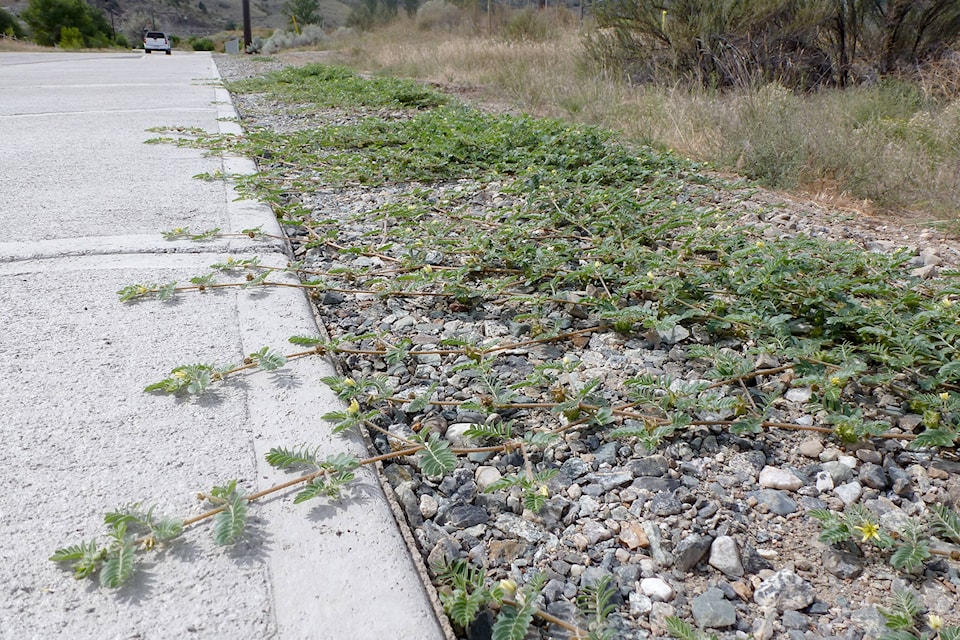The spread of an invasive plant in the Summerland area has prompted the issue of an alert.
Puncturevine is a spiny summer annual that has been basking in the summer sunshine and flourishing in response to recent rainfall.
Puncturevine is native to the southern Europe and Mediterranean region.
Since its initial discovery in Washington State in 1924, human activity has introduced and spread the plant throughout the Pacific Northwest.
In Canada, puncturevine only occurs in British Columbia. It is most prolific in the sandy soils around Oliver, Osoyoos and Keremeos, with a few dozen sites around Penticton and isolated patches from Summerland north to Vernon.
In Summerland, there are fewer than 10 confirmed sites, but new outbreaks have recently been reported. As well, a small outbreak was discovered on private land in Lillooet this summer.
READ ALSO:
READ ALSO:
Puncturevine grows along road shoulders, gravel trails, vacant lots, beaches and unpaved parking sites. It is mat forming, with stems reaching up to three metres in length. It readily makes its way into agricultural lands, where it grows between rows of ground crops such as strawberries, tomatoes and melons, tree fruits and grape vines.
The stems of puncturevine are covered by hairy leaves that are divided into six to eight leaflets.
Tiny yellow flowers develop into distinctive fruits or seedpods.
Puncturevine seedpods consist of five sections that, at maturity, break into tack-like structures with sharp spines for which this weed is named. These sharply pointed seedpods stick painfully in bare feet, flatten bicycle tires and are easily transported in vehicle tires. They can also lodge into your dog91ÂãÁÄÊÓƵ™s paws and injure the feet, hides, mouths, eyes and digestive tracts of livestock.
Puncturevine can be a contaminant of fill, gravel, sand, crushed stone and other aggregates, so be wary if importing such materials to your property.
The best method of controlling it is to prevent establishment by destroying the first plants found in an area before seeds begin to form.
Because they germinate all summer long, monitoring and repeat treatments are continually required.
Young plants are easily controlled by hoeing, shallow tillage or by carefully hand-pulling plants.
Daisy (dandelion) grubbers are a great tool for popping up puncturevine plants.
If seedpods have not yet developed, the plants can be composted. If plants have already matured and the seedpods have ripened (turned brown and easily fall off the plants), plants should be carefully pulled and bagged, then taken to the local landfill.
Like most other weeds, puncturevine prefers areas of disturbed, bare ground. A three-inch layer of mulch can also effectively reduce infestations.
Further information on invasive species is available online at www.oasiss.ca.
To report a typo, email:
news@summerlandreview.com.
news@summerlandreview.com
Like us on and follow us on .



